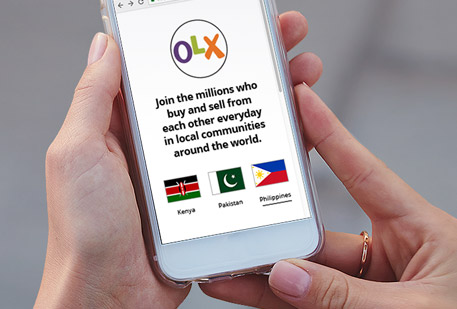The financial rewards of employee engagement: better relationships bring results
Employee engagement is the lifeblood of successful organizations. When employees are deeply connected to their organization, they share the vision of their employer and not only commit to achieving overall goals and objectives but often go above expectations.
When leaders focus on short-term financial wins, they put long-term investment in employee engagement and overall economic success at risk. If there is no incentive, perceived benefit, or encouragement for strategic, long-term thinking, planners and leaders are likely to aim for quick wins, even if they are not in the best interest of the organization over time.
Organizations that focus on growing their employees and helping them build strong relationships at all levels reap the rewards of an engaged and committed workforce. Yet development is frequently one of the first cuts made during times of economic strain.
This Fierce, Inc. white paper excerpt provides data on the financial rewards of employee engagement and details how to build organizational relationships and ultimately increase engagement by targeting, setting expectations, and maintaining continuous support in three key areas: candour, collaboration, and trust.
Why Engagement Matters
- Organizations with engaged employees enjoy higher returns.
- Fortune’s 100 Best Companies to Work for in America show annual equity returns 3.5% higher than those of their peers. In addition, engaged employees create stronger organizations, are better at their jobs, and stay longer.
- Gallup lists world-class organizations with a ratio of engaged to actively disengaged employees at nearly 10:1 (9.57:1). For “average" organizations, the ratio of engaged to actively disengaged employees is almost 2:1 (1.83:1).
- Employees with the highest level of commitment perform 20% better and are 87% less likely to leave the organization.
Engagement hinges on relationships. The best indicator of engagement is the quality of relationships an employee has in the workplace—with direct managers, with co-workers, and with the leadership team. The communication, connections, and understanding that result from these relationships are also key drivers of engagement: Are job expectations understood? Is regular feedback being received? Do employees feel their opinions matter? Are advancement opportunities clear?
Conversation=Relationship
Relationships=Culture
Numerous, ongoing conversations do not just create, build, or sustain a relationship; the conversation is the relationship. The inverse is true as well. Relationships are determined by conversations.
Organizations that invest in their employees, specifically in their ability to communicate well, surpass other organizations in engagement and retention. When communication skills are highly developed and candour, collaboration, and trust are part of the overall culture, effective conversations take place—whether the aim of conversations is to resolve conflict, coach others, build team strength and accountability, or negotiate productively.
Halley Bock, CEO of Fierce, Inc., describes engagement as a key leading indicator for forecasting gains and predicting results. "If you want to know how your organization will perform in a year, measure employee engagement today.”
Myopic Management Practices
Managers often sacrifice overall business achievements, including the engagement level of their workforce, for quick wins. A recent American survey by Duke University and the National Bureau of Economic Research showed most managers are willing to risk long-term negative consequences if it makes managing earnings and financial disclosures easier or more in line with predictions. Surprisingly, 78% admit to sacrificing long-term value to smooth earnings[1].
Increased turnover in the modern workforce may also affect long-term investments in people. If managers expect to stay with their organization, they are more willing to invest in undertakings that are costly in the short run yet maximize profits and positively affect the bottom line in the long run[2]. If turnover is high, leaders are more likely to expect that their own tenure may be limited; therefore, they tend to focus on quick wins since they believe they will not be around to reap the rewards of long-term planning.
Emotional Intelligence Quotient (EQ)
Enterprising organizations understand the importance of relationships, yet very few talk about how to build relationships. They undoubtedly expect employees to be able to read a P&L statement and know about market share; however, they rarely care about whether employees can conduct productive, healthy conversations that lead to real change. Frequently, organizations are so focused on the IQ piece that they overlook EQ, or emotional intelligence, even though EQ makes companies more profitable and less at risk of losing institutional knowledge by having to replace staff.
Studies show companies with great work environments not only make more money, but also are more likely to be filled with highly engaged employees. In turn, highly committed employees perform 20% better and are 87% less likely to leave the organization than less committed co-workers[3].
To build organizational relationships and increase engagement, companies must target, set expectations, and maintain continuous support in three key areas.
Candour: The Skill that Should be Taught in Business School
When organizations strive to create a culture of candour, they must be prepared to back up their aspirations with honest conversations. This not only ensures the right things are being talked about with the right people, it also affects the bottom line. “Companies rated by their employees as being in the top quartile in openness of communication delivered an average total shareholder return of 7.9% over a recent 10-year period, compared with 2.1% at companies in other quartiles”, according to a recent Harvard Business Review study. The Corporate Executive Board tracks seven key indicators in more than 130 companies worldwide, and “the one most strongly correlated with 10-year returns is employees’ comfort in speaking up, even when they have negative things to say”.[4]
Candour also provides much needed transparency in organizational strategies and individual development paths. When people understand organizational goals and their role in achieving them, engagement grows. When organizations are transparent about plans to develop employees and employees have clearly defined paths for growth, progress occurs and retention increases.
…highly committed employees perform 20% better and are 87% less likely to leave the organization than less committed co-workers.
At the organizational level, employees can be skeptical of large organizations. People learn to trust if leadership is straightforward and upfront about decisions. By setting clear direction and explaining what you’re going to do and why, you allow people to rise to the occasion. Skilled leaders let others know where the turns are, preparing employees with the resources and tools they need to successfully navigate change.
At the individual level, development for development’s sake does not create engagement. Building relevant skills and having honest conversations about career goals and how to attain those does. Return on investment occurs when employees feel they have some control over their career path and have advocates committed to their growth.
Collaboration: Collective Wisdom is Greater than the Sum of its Parts
If organizations see only the value in speedy decisions and immediate results, they miss out on the benefit of diverse perspectives. Collaboration does not need to be a lengthy process, but it needs to be an honest one. When seeking input and enlisting the help of others, consider these questions:
- Are the right people in the room?
- Are team members able to express thoughts and emotions without fear of retaliation?
- Do team members feel safe questioning the opinions of others?
- Are team members prepared to respond openly, without being defensive, if questioned by others?
- Is the overall goal to describe different realities without laying blame?
Collaboration not only results in more knowledge-based and profitable decisions, it also strengthens relationships, builds alignment, and engages champions and sponsors.
Trust: Knowing When to Let Go
Essential to healthy work environments, trust is created through personal and organizational accountability, credible leadership, and company-wide practices to treat others with respect and dignity. Trust grows through effective delegation and development—when employees have earned the right to create their own paths to achieving goals.
Collaboration not only results in more knowledge-based and profitable decisions, it also strengthens relationships, builds alignment, and engages champions and sponsors.
The Importance of Providing Support
Providing employees with the skills necessary to build relationships and conduct productive conversations—whether they are teambuilding, coaching, delegation, or confrontation conversations—is essential. Yet training is only the beginning. Learning occurs when development is supported at both the managerial and the organizational level.
Without a clear understanding of how new skills will benefit the individual, how they will be incorporated into the way things are done, and how they are relevant to the day-to-day business, transfer of learning is unlikely.
Transfer of learning comes down to support, and support is an ongoing process. In the case of establishing strategic, long-term thinking, follow these clear and continuous supportive steps:
- Provide tools, roadmaps, and resources to prepare employees to achieve both short and long-term goals.
- Model behaviour that instills stated values (candour, collaboration, and trust) and expectations. (Expectations are that employees will have the courage to speak the truth, diverse opinions will be sought out, and people will be allowed to make a difference.)
- Conduct continual pulse checks to assess actual behaviour.
- Reward and compensate teams for long-term strategy and alignment.
Ongoing support instills learning and builds committed employees who are attached to their work, their colleagues, and their organization.
Conclusion and Next Steps
Visionary leaders understand quick wins may please shareholders for the short-term, but long-term investments in people maximize their rewards. Forward-thinking organizations build skills and provide continuous support in the three key areas necessary to strengthen organizational relationships:
- Candour—to ensure employees are equipped and encouraged to speak the truth and accept honest insights from others.
- Collaboration—to create an environment of intellectual curiosity where employees understand the value of soliciting differing opinions and enlisting the help of others.
- Trust—to provide work environments and model behaviour that encourage employees to accept responsibility for their own actions as well as trust in others to do what they do best.
The value of engagement is immense. Engaged employees achieve measurable results and realize financial goals. They also create a perpetual cycle of more engaged employees.
Footnotes:
- [1] Graham JR, Harvey CR, Rajgopal S (2005) The economic implications of corporate financial reporting. Journal of Accounting and Economics 40.1-3:3-73
- [2] Graber RS (May 2004) Management turnover and myopic decision-making. Academy of Accounting and Financial Studies Journal
- [3] Lockwood NR ( March 2007) Leveraging employee engagement for competitive advantage: HR’s strategic role. HRMagazine:1-11
- [4] Griffin M (18 October 2011) Open-door policy, closed-lip reality. Corporate Executive Board.
Reprinted with the permission of Fierce, Inc., an award-winning leadership development and training company that drives results for business and education by improving workplace communication. The company has twice been honoured as an Inc. 500|5000 company, and in 2011 was named to Training Industry.com’s "Companies to Watch" list and Seattle Business Magazine’s "100 Best Companies to Work for in Washington" list.www.fierceinc.com
 CA-EN
CA-EN UK
UK AU
AU US
US NZ
NZ PH
PH ZA
ZA SG
SG HK
HK


